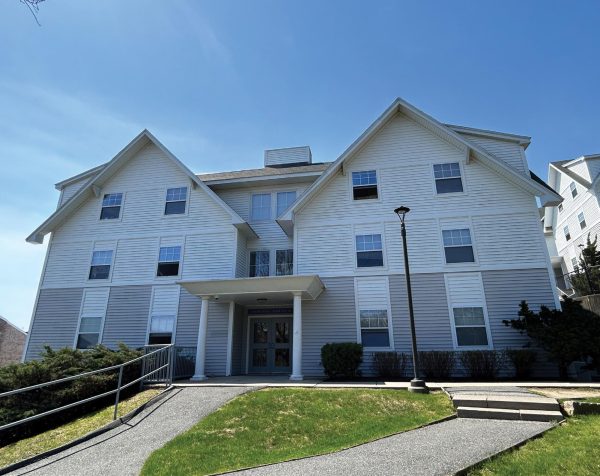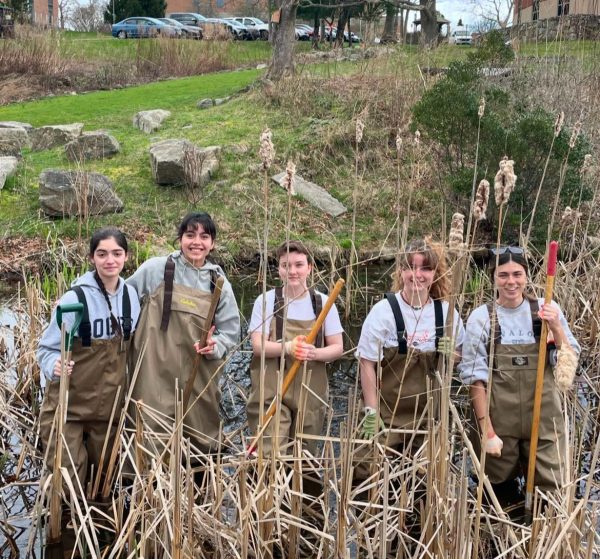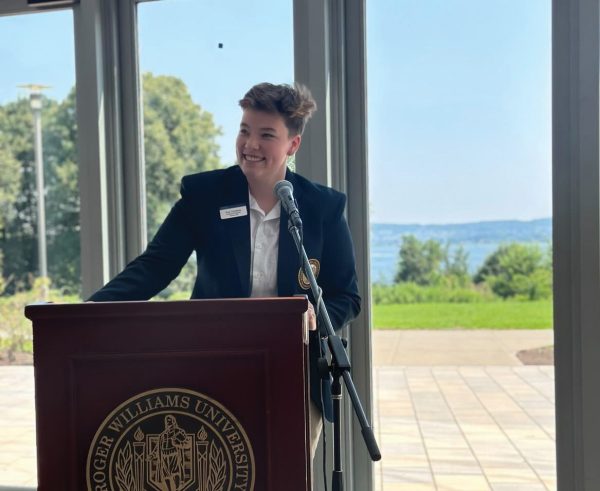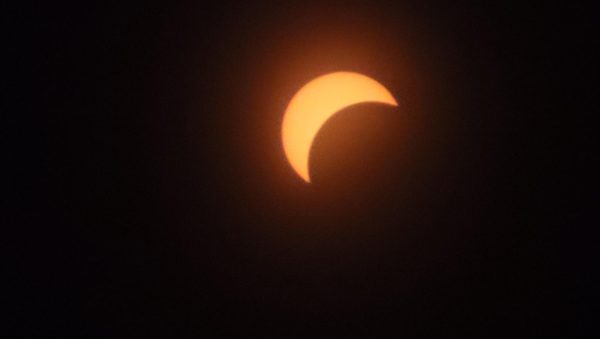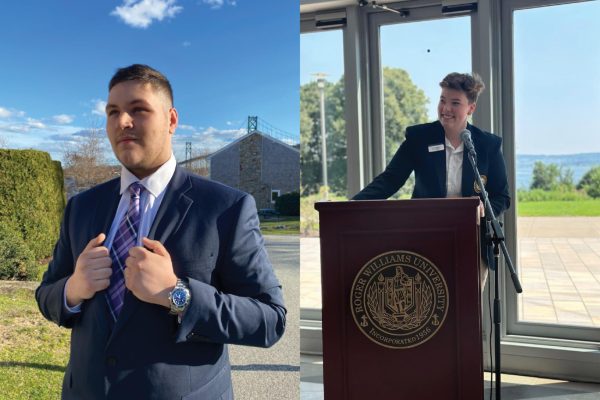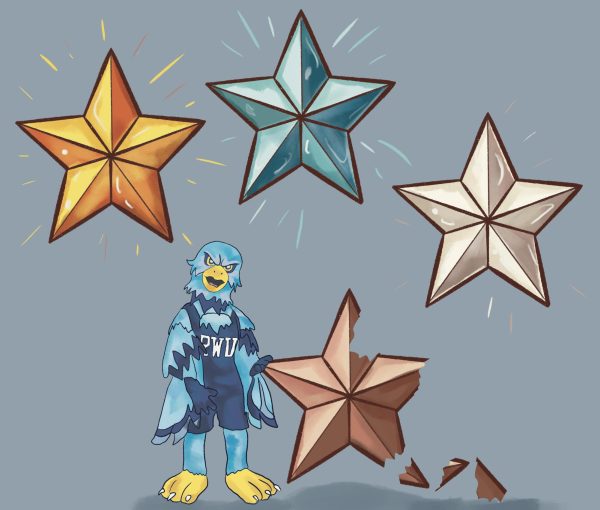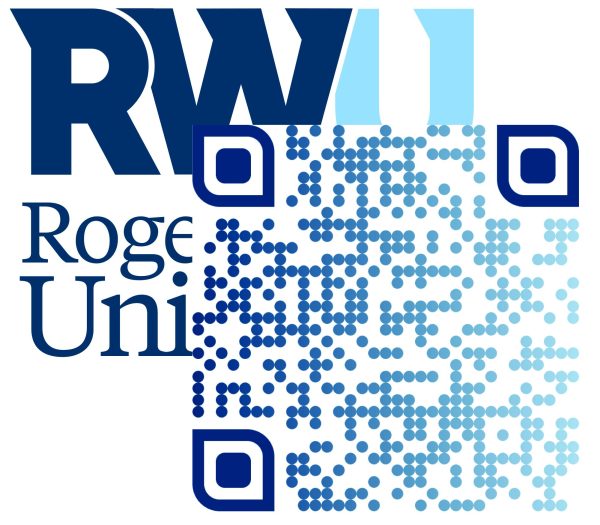P.E.A.C.E. Program hosts monthly Fireside Chat: Retention and Diversity
Although students undoubtedly learn much within the walls of the classroom, there is also a lot of learning that comes in the form of meeting new people who might not share your own identities.
That is why it is so dangerous that, discounting the international student population, only 12.5 percent of undergraduate students at Roger Williams University are people of color. In other words, 73.4 percent of undergraduate students on campus are white, indicating the lack of diversity at RWU.
On Wednesday, Dec. 6, students in the P.E.A.C.E. (Peer Empowerment, Advocacy/Activism, and Community Engagement) Program hosted a Fireside Chat discussing the university’s retention rates from the perspectives of marginalized students.
“To many of you, it’s no secret that Roger Williams has been struggling with issues of retention, and it’s time that we confront this issue head on by discussing it as openly and honestly as possible,” began sophomore Megan Mooney, a P.E.A.C.E. Keeper who served as the night’s moderator.
“I don’t want to guess what you’re going to tell me, I want to hear from you about what you think is working well on this campus and what is falling short of your expectations,” said President Donald Farish in his open remarks, drawing on the importance of hearing directly from the students themselves.
Chief Diversity Officer Ame Lambert, who will be leading an all-day summit in the beginning of the spring semester at which members of the campus community can share their visions for the future of RWU, expressed her desire for students to thrive and graduate feeling empowered.
“To every student that’s told me that they’re planning to transfer, give us some time to build stuff, and give it some time to happen,” said Lambert. “I can promise you that we are talking about it and that we are going to build things.”
The first question posed by the facilitators inquired about the personal experiences and feelings that come with being a minoritized student on campus.
One student brought up the fact that, as a minoritized student on campus, you don’t see people like you. Particularly in the classroom, it’s hard to be the only person of color and, as a result, to not have people relate to her on that level.
Her sentiment was echoed by many of the other students on the panel and in the audience.
Another P.E.A.C.E. Mentor panelist talked about how she never saw the Intercultural Center on campus tours prior to coming to the university. Like many other students, she has also heard derogatory terms used frequently on campus, including the N-word.
Some students among the audience spoke on their minoritized gender and sexuality identities, describing the difficulties that they experience on campus as well.
Although all students of color don’t share the same culture, they share a lot of similar experiences from students of the dominant culture.
“Picking on everything that I do, and what I think is a mundane routine, it’s not to [students of non-minoritized identities],” one student explained. “It’s like [it’s] strange and it feels like you’re in a petting zoo, and that eats at a person.”
Another student talked about the importance of connecting with people who are different from you. She talked about how exhausting it is to constantly have to explain and teach other people about one’s experiences as a person of color.
Tyler said that the moment her parents left after moving her into her dorm freshman year, a girl in her hall “requested” that she not steal from her, based on a belief that Tyler, as a person of color, is less trustworthy than other white students.
From being expected to be an activist and representative for people of color to being judged by the accent you were born with to “no color parties,” these personal experiences of overt and covert racism happen all throughout campus.
According to some students in the room, the dialogue surrounding the prevalence of diversity on campus seems to be considered less important by their peers. A student said that she once overhead other students on campus talking about racial diversity and that students of color should just “get over it,” which she found to be very discouraging.
Other students mentioned that they felt that these experiences don’t reflect the thoughts of all students on campus, and that there are students who do care about racial equality and diversity in their midst.
One of the panelists shared that a student in her dorm said, “that’s why whites are the superior race” in response to a black family’s answer on the popular television show Family Feud. These scientific racism claims have been disproven for decades.
Junior Meg de la Rinco, one of the event moderators, said that it is important for students of color to see themselves and people who look like them across campus.
One student shared that she once ended up moving out after being bullied by the other students in her dorm. The situation raised questions surrounding why she was the one who had to move out of the dorm, rather than the students bullying her.
Most of the students in the room expressed that they felt the greatest sense of belonging in the Intercultural Center and the Gender and Sexuality Center, because both are safe spaces that feel like home.
The event concluded with a conversation about the changes that need to be made to make the university a place where minoritized students can thrive.
Requests for an updated Intercultural Center and funding/staff for the Gender and Sexuality Center were strongly echoed changes. One student brought up the idea of critical mass for minority students, in which the students in underrepresented minority groups grow to a number in which they no longer feel isolated.
At the beginning of the event, both Farish and Lambert assured that these conversations are happening, and that change will happen soon. The students will continue to fight the good fight for social justice on campus.

